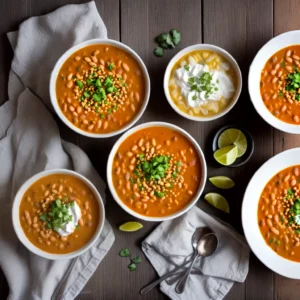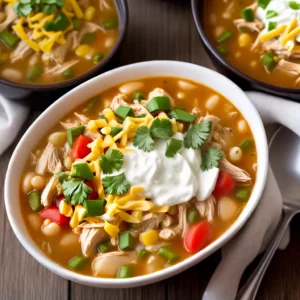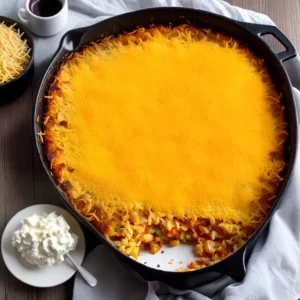Hello, fellow kitchen enthusiasts! Today, let’s delve into the world of cookware and explore the fascinating differences between skillets and frying pans. These kitchen tools are often used interchangeably, but do you know the subtle distinctions that set them apart? Join me as I uncover the secrets behind these versatile culinary essentials.
Skillets and frying pans are both vital components of any well-equipped kitchen. They come in various materials like cast iron, stainless steel, and aluminum, each with its unique advantages. Understanding these differences will help you make informed decisions about which kitchen tool to use for specific cooking tasks.
Key Takeaways:
- Skillets and frying pans are often used interchangeably, but there are subtle differences between the two.
- Skillets are commonly associated with cast iron material, while frying pans have a general term that encompasses various cooking vessels.
- Both skillets and frying pans have flared sides, flat bottoms, shallow depth, and no lids, making them suitable for high-heat searing, grilling, and shallow frying.
- Materials like cast iron, carbon steel, stainless steel, and aluminum offer different benefits in terms of heat distribution, non-stick abilities, and ease of maintenance.
- Choosing the right pan depends on personal preference, recipe requirements, and specific cooking techniques.
Differences in Materials: Cast Iron
In the world of skillets and frying pans, cast iron takes the spotlight as a popular material choice. With its ability to retain heat and provide excellent non-stick abilities, it’s no wonder why cast iron pans have become a staple in many kitchens.
One key characteristic of cast iron pans is their weight. They can be quite heavy compared to other materials, which may require some adjustment in handling. Additionally, cast iron pans need to be properly seasoned before use to create a natural non-stick surface. This involves coating the pan with a layer of oil and baking it in the oven. Once seasoned, cast iron pans become highly durable and versatile for various cooking methods.
| Pros | Cons |
|---|---|
| Retains heat well | Heavy and can be difficult to handle |
| Excellent non-stick abilities | Requires proper seasoning before use |
| Durable and long-lasting | Requires special care to prevent rust |
Cast iron pans are known for their exceptional heat retention and non-stick abilities. With proper care and seasoning, they can be a reliable tool in the kitchen for searing, frying, and more.
So if you’re looking for a trusty companion for your cooking adventures, a cast iron skillet or frying pan might just be the perfect choice.
Differences in Materials: Carbon Steel
Carbon steel is another popular material for both skillets and frying pans. It offers quick and even heat distribution, making it a favorite choice among chefs. Carbon steel pans are lighter and less clunky compared to cast iron, making them easier to maneuver in the kitchen. Additionally, carbon steel contains more iron than cast iron, making it a great choice for those seeking non-toxic cookware options.
To showcase the differences between carbon steel and other materials, let’s take a look at the table below:
| Material | Heat Distribution | Weight | Non-Toxic |
|---|---|---|---|
| Carbon Steel | Quick and even | Lightweight | Yes |
| Cast Iron | Good heat retention | Heavy | No |
| Stainless Steel | Good heat retention | Moderate | Yes |
| Aluminum | Quick and even | Lightweight | Yes (with non-stick coating) |
As seen in the table, carbon steel offers quick and even heat distribution, making it ideal for achieving consistent cooking results. Its lightweight nature also adds to its appeal, allowing for easy handling and maneuverability in the kitchen. Moreover, carbon steel pans are a non-toxic option, ensuring a safe cooking experience for you and your loved ones.
With the knowledge of carbon steel’s unique properties, you can now make an informed decision when choosing the right skillet or frying pan for your cooking needs.
Differences in Materials: Stainless Steel
When it comes to choosing a skillet or frying pan, one material that stands out is stainless steel. Known for its durability and versatility, stainless steel pans are a popular choice in many kitchens. One of the key advantages of stainless steel is its excellent heat retention, allowing for even cooking and consistent results. Whether you’re searing a steak or sautéing vegetables, stainless steel pans can handle the heat.
In addition to its heat retention properties, stainless steel is also highly versatile. These pans can be used for a variety of cooking methods, from stir-frying to simmering sauces. Their smooth surface makes it easy to flip food, while their sloped sides allow for effortless stirring and tossing. Stainless steel pans are also generally easy to clean, requiring just soap and water.
“Stainless steel pans are my go-to choice in the kitchen. They heat up quickly and evenly, and I love how easy they are to clean. I can use them for anything from searing meats to making delicate sauces.”
It’s worth noting that not all stainless steel pans are created equal. The quality and durability of a stainless steel pan can vary based on its grade. The most common grades of stainless steel used in cookware are 18/8 and 18/10. These numbers refer to the percentage of chromium and nickel present in the steel, with 18% chromium and 8% or 10% nickel being the standard. Higher nickel content results in better corrosion resistance and a more polished appearance.
| Grade | Chromium (%) | Nickel (%) | Properties |
|---|---|---|---|
| 18/8 | 18 | 8 | Budget-friendly option, good corrosion resistance |
| 18/10 | 18 | 10 | Higher corrosion resistance, more polished appearance |
When choosing a stainless steel pan, it’s important to consider your cooking needs and budget. Higher-grade stainless steel pans may be more expensive, but they offer enhanced durability and performance. Ultimately, the choice between a skillet and frying pan depends on your personal preference and the specific recipe requirements. With its heat retention, versatility, and ease of cleaning, a stainless steel pan is a valuable addition to any kitchen.
Differences in Materials: Aluminum
When it comes to choosing the right cookware for your kitchen, aluminum pans, including skillets and frying pans, offer an economical and practical option. Aluminum is known for its excellent heat conductivity, which allows for even and efficient cooking. These pans are often coated with anodized aluminum, providing a smooth and non-stick surface for easy food release.
One of the key advantages of aluminum pans is their affordability. Compared to other materials like cast iron or stainless steel, aluminum pans are more budget-friendly, making them a popular choice for home cooks and professional chefs alike. Despite their economical price, aluminum pans still offer excellent performance in terms of heating and cooking capabilities.
“Aluminum pans are a great choice for those looking for an affordable and reliable option in the kitchen.”
In addition to being economical, aluminum pans are also lightweight, making them easy to handle and maneuver while cooking. The lightweight nature of these pans is particularly beneficial for those who prefer pans that are not too heavy and cumbersome in the kitchen.
It’s important to note that aluminum is a reactive metal, which means that it can react with certain acidic or alkaline foods. To prevent any unwanted taste or discoloration, it’s recommended to avoid cooking highly acidic or alkaline ingredients in aluminum pans. Additionally, it’s advisable to avoid using metal utensils on the surface of anodized aluminum pans to prevent scratching the non-stick coating.
| Advantages of Aluminum Pans | Disadvantages of Aluminum Pans |
|---|---|
|
|
Sauté Pans: Deeper and More Versatile
When it comes to cookware, sauté pans offer a deeper and more versatile option compared to frying pans and skillets. The main distinguishing feature of sauté pans is their straight sides and greater depth. This design makes them ideal for cooking dishes that require more liquid, such as shallow frying or braising. The straight sides of sauté pans help prevent splattering and allow for easy tossing and turning of ingredients.
One key advantage of sauté pans is their versatility. They can be used for a wide range of cooking techniques, including sautéing, stir-frying, searing, and shallow frying. The greater depth of sauté pans also makes them suitable for simmering sauces and reducing liquids. Additionally, many sauté pans come with lids, which are beneficial for retaining moisture while cooking sauces or dishes that require longer cooking times.
Whether you’re a professional chef or a home cook, sauté pans are a valuable addition to your kitchen arsenal. Their deeper and more versatile design allows for greater culinary creativity and flexibility. So, the next time you’re looking to cook a recipe that requires a little more depth and liquid, reach for a sauté pan and unlock a world of possibilities.
Choosing the Right Pan for Your Recipe
When it comes to selecting the perfect cookware for your recipe, it’s important to consider the specific requirements of your dish. Both skillets and sauté pans are versatile options that can handle a variety of cooking methods, but each has its own strengths and advantages.
If you’re preparing a slow-cooking recipe that requires a lot of liquid, such as a hearty stew or a braised dish, a sauté pan with its greater depth and surface area may be the better choice. The deeper sides of a sauté pan allow for more liquid to be added, which is essential for simmering and creating rich flavors.
On the other hand, if you’re looking to achieve high-heat searing or flipping stir-fry dishes, a skillet is the way to go. The sloped sides of a skillet make it easier to maneuver and flip ingredients, while the flat bottom allows for even heat distribution. Skillets are also great for grilling and shallow frying, thanks to their shallow depth and flared sides.
Comparison of Skillet and Sauté Pan
| Feature | Skillet | Sauté Pan |
|---|---|---|
| Versatility | High | High |
| Cooking Methods | High-heat searing, grilling, shallow frying | Simmering, braising, sautéing |
| Depth | Shallow | Deeper |
| Sides | Sloped | Straight |
| Lid | No | Yes |
Ultimately, the choice between a skillet and a sauté pan depends on your personal preferences and the specific requirements of your recipe. Having both in your kitchen arsenal ensures that you have the right tool for every culinary adventure.
The Role of Non-Stick Coating in Skillets and Frying Pans
When it comes to the ease of cooking and cleaning, the non-stick coating in skillets and frying pans plays a crucial role. This coating is designed to reduce the risk of food sticking to the pan, making it easier to flip and remove ingredients without any hassle. Whether you’re whipping up a scrambled egg breakfast or sautéing vegetables for dinner, the non-stick coating ensures a seamless cooking experience.
One of the primary benefits of a non-stick coating is that it requires less oil or fat for cooking. This feature not only promotes healthier cooking but also makes it easier to control the amount of oil used in your recipes. With a non-stick pan, you can achieve the perfect balance of flavor and health by using minimal oil while still enjoying food that doesn’t stick to the surface.
Having a non-stick coating in your skillet or frying pan also makes the cleaning process a breeze. The smooth surface prevents food residues from clinging to the pan, allowing you to effortlessly wipe it clean with a sponge or cloth. Say goodbye to scrubbing and soaking pans for hours – a non-stick coating saves you time and effort in the kitchen.
Choosing the Right Non-Stick Pan
When selecting a non-stick skillet or frying pan, it’s important to consider the quality and durability of the coating. Look for pans with a reputable brand that offers a durable non-stick surface, ensuring that it can withstand regular use and maintain its effectiveness over time. Reading customer reviews and checking for warranty information can provide valuable insights into the quality of the non-stick coating.
Additionally, it’s essential to follow the manufacturer’s instructions for proper care and maintenance. Avoid using metal utensils or abrasive cleaning tools that can scratch or damage the coating. Opt for cooking utensils made of silicone, wood, or plastic to preserve the non-stick surface. By taking care of your non-stick pan, you can enjoy its benefits for a long time.
| Benefits of Non-Stick Coating | Considerations |
|---|---|
| Effortless cooking and flipping of ingredients | Not compatible with high-heat cooking |
| Reduced need for oil or fat | Requires gentle use and proper maintenance |
| Easy cleanup with minimal scrubbing | May wear off over time with frequent use |
Overall, the non-stick coating in skillets and frying pans offers convenience and efficiency in the kitchen. It allows for easy cooking, flipping, and cleaning, making your culinary adventures more enjoyable. By choosing a high-quality non-stick pan and practicing proper care, you can savor the benefits of non-stick cooking for years to come.
The Importance of Choosing the Right Cookware
When it comes to cooking, having the right cookware is essential for achieving the best results. Quality assurance in cookware materials and construction plays a significant role in ensuring optimal heat distribution, durability, and overall performance. Investing in high-quality kitchen essentials like skillets and frying pans is a wise decision that can enhance your cooking techniques and make your time in the kitchen more enjoyable.
Choosing the right cookware involves considering various factors such as the material, size, and specific cooking techniques you prefer. Different materials, like cast iron, carbon steel, stainless steel, and aluminum, offer unique characteristics and advantages. For example, cast iron provides excellent heat retention and non-stick abilities when properly seasoned, while stainless steel offers versatility and easy cleaning.
Understanding your cooking techniques is also crucial in selecting the right cookware. Skillets and frying pans are versatile tools that can handle a range of cooking methods, including sautéing, frying, baking, and grilling. Depending on your recipe requirements, you may choose a skillet for high-heat searing or a sauté pan for dishes that require more liquid and surface area.
By carefully choosing the right cookware and understanding its qualities and limitations, you can elevate your culinary creations and create delicious meals with ease.
Table: Comparison of Cookware Materials
| Material | Advantages | Disadvantages |
|---|---|---|
| Cast Iron | Excellent heat retention, natural non-stick surface, durable | Requires seasoning and proper maintenance, heavy |
| Carbon Steel | Quick and even heat distribution, lightweight | Requires seasoning, may react with acidic ingredients |
| Stainless Steel | Excellent heat retention, versatile, easy to clean | Does not offer non-stick properties |
| Aluminum | Economical, lightweight, non-stick surface | May react with acidic ingredients, less durable than other materials |
Table: Comparison of cookware materials highlighting the advantages and disadvantages of each material.
Expert Tips for Using Skillets and Frying Pans
As an experienced chef, I’ve learned some valuable tips and techniques for using skillets and frying pans to achieve the best cooking results. Whether you’re a novice in the kitchen or a seasoned cook, these expert tips will help you elevate your food preparation and cooking techniques.
1. Season Your Cast Iron Skillet:
If you’re using a cast iron skillet, it’s essential to season it before use. Seasoning creates a natural non-stick surface and helps protect the pan from rusting. To season your cast iron skillet, coat it with a thin layer of oil and bake it in the oven at a low temperature for about an hour. Repeat this process a few times, and your skillet will develop a beautiful, non-stick patina.
2. Preheat Your Stainless Steel Pan:
When using a stainless steel pan, preheating is key to prevent food from sticking. Heat your pan on medium-high heat for a few minutes before adding any ingredients. This will ensure that the surface of the pan is evenly heated, allowing for proper browning and searing.
3. Use the Right Heat Level:
Choosing the right heat level is crucial for successful cooking. For high-heat methods like searing or stir-frying, use medium-high to high heat. For delicate ingredients or slow-cooking, lower the heat to medium or low. Experiment with different heat levels to find the perfect balance for your recipes.
Remember, practice makes perfect when it comes to using skillets and frying pans. Don’t be afraid to try new techniques and experiment with different ingredients. With these expert tips, you’ll be well on your way to creating delicious meals with your trusty skillets and frying pans.
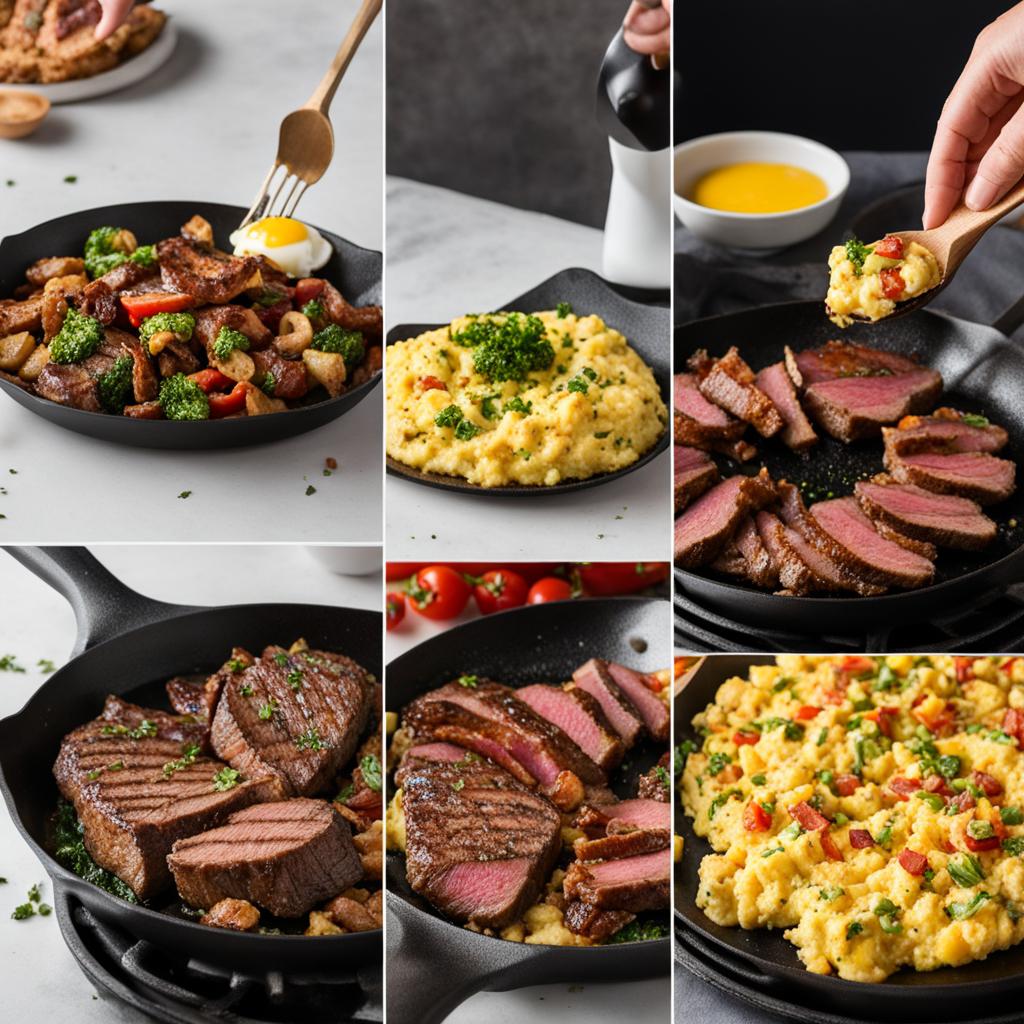
Skillet vs Frying Pan: Choosing the Right Tool
When it comes to kitchen tools, skillets and frying pans are often used interchangeably. They are both versatile culinary instruments that can be used for various purposes. Whether you’re sautéing, frying, baking, or grilling, both skillets and frying pans can get the job done.
The main difference between a skillet and a frying pan lies in the terminology. While there may be slight variations in their design, such as the association of skillets with cast iron material, the choice between the two ultimately depends on personal preference and the specific requirements of your recipe.
Both skillets and frying pans offer versatility in the kitchen. They have a flat bottom, flared sides, and a shallow depth, making them ideal for high-heat cooking methods like searing, grilling, and shallow frying. Whether you’re a professional chef or a home cook, having both skillets and frying pans in your culinary arsenal will give you the flexibility to tackle any recipe with confidence.
Table: Skillet vs Frying Pan
| Skillet | Frying Pan |
|---|---|
| Often associated with cast iron material | General term for various cooking vessels |
| Excellent heat retention and non-stick abilities | Shallow cooking vessel used for frying food |
| Suitable for high-heat searing, grilling, and shallow frying | Flat bottom, flared sides, and shallow depth |
As you can see, the choice between a skillet and a frying pan comes down to personal preference and the specific needs of your recipe. Both are valuable kitchen tools that offer versatility and functionality. Whether you’re a culinary enthusiast or a novice in the kitchen, the right tool is the one that helps you achieve the desired results in your cooking adventures.
Skillet vs Frying Pan: Maintenance and Care
Proper maintenance and care are essential for ensuring the longevity and optimal performance of both skillets and frying pans. By following a few simple tips, you can keep your cookware in great condition for years to come. Here are some key maintenance practices to consider:
Seasoning Cast Iron Pans
If you own a cast iron skillet or frying pan, seasoning is a crucial step in maintaining its non-stick abilities and preventing rust. To season your cast iron pan, coat it with a thin layer of oil and bake it in the oven at a low temperature for an hour. Repeat this process periodically to maintain the protective layer. Avoid using soap or abrasive materials when cleaning your cast iron pan, as these can strip away the seasoning.
Appropriate Cleaning Techniques
When it comes to cleaning skillets and frying pans, it’s important to avoid abrasive materials that can damage the surface. Instead, use a gentle scrub brush or sponge with warm water and mild dish soap. For stubborn stains, you can create a paste of baking soda and water and gently scrub the affected area. After cleaning, be sure to thoroughly dry your pan to prevent rust.
Following Manufacturer Guidelines
Every skillet and frying pan comes with its own set of instructions from the manufacturer. It’s important to read and follow these guidelines to ensure proper care and maintenance. Some pans may have specific temperature limitations or recommend certain cleaning methods. By adhering to these recommendations, you can prolong the life of your cookware and maintain its performance.
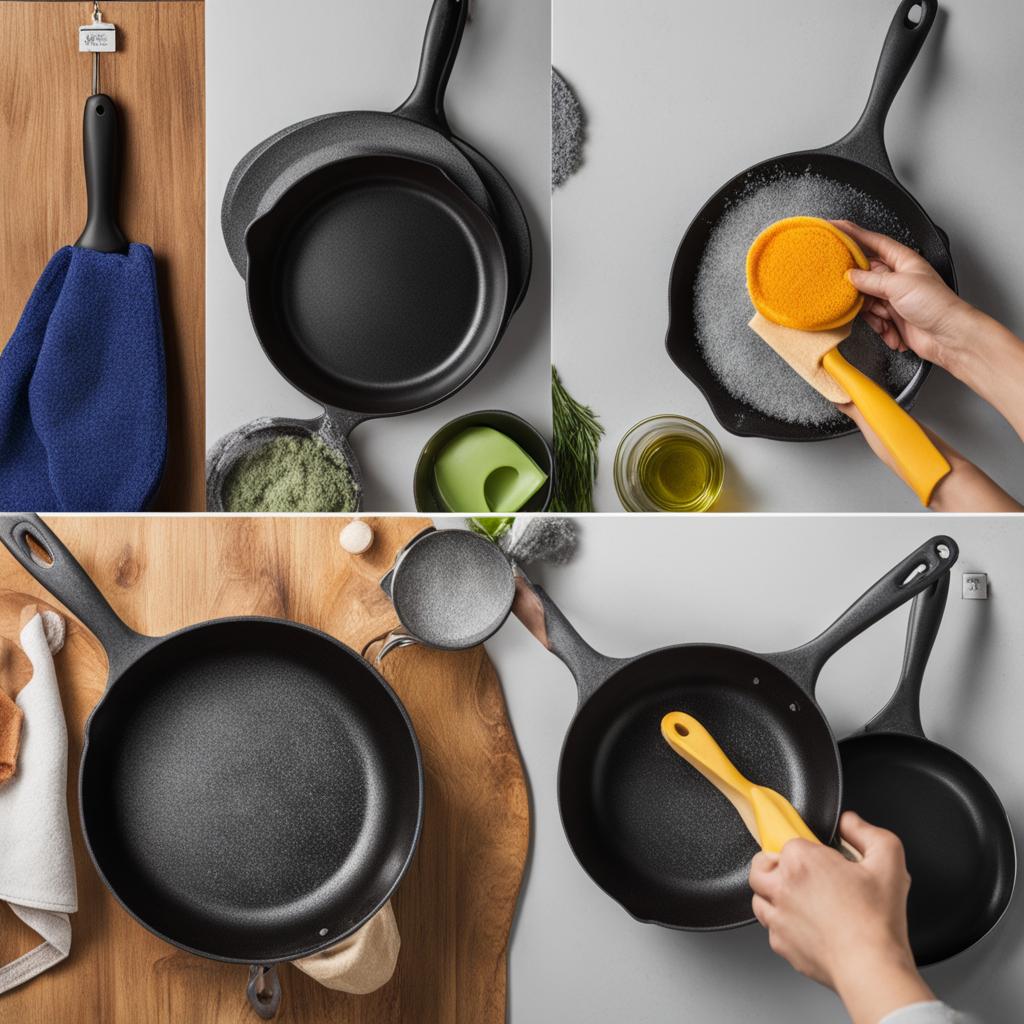
With these maintenance and care tips, you can keep your skillets and frying pans in excellent condition. By seasoning your cast iron pans, using appropriate cleaning techniques, and following manufacturer guidelines, you’ll be able to enjoy the benefits of these kitchen essentials for years to come.
Conclusion
After exploring the differences between skillets and frying pans, it’s clear that they are essentially the same type of pan with slight variations in terminology. Both skillets and frying pans are versatile kitchen tools that can handle various cooking methods. The choice between the two depends on personal preference and the specific recipe requirements.
When selecting cookware, it’s important to consider factors such as depth, cooking techniques, and materials. Skillets and frying pans come in a variety of materials, including cast iron, carbon steel, stainless steel, and aluminum. Each material offers different benefits in terms of heat distribution, durability, and non-stick capabilities.
Proper maintenance and care are crucial for the longevity and performance of skillets and frying pans. Seasoning cast iron pans, avoiding abrasive cleaning methods, and following manufacturer guidelines are essential practices. By choosing high-quality cookware and following proper maintenance practices, you can ensure long-lasting performance and enjoyable cooking experiences with your skillets and frying pans.
So, whether you’re whipping up a stir-fry, searing a steak, or making a delicious sauce, skillets and frying pans are the go-to tools in your kitchen. Understanding their differences, choosing the right one for your recipe, and taking care of them will guarantee optimal results and make your cooking adventures even more enjoyable.
FAQ
What is the difference between a skillet and a frying pan?
Skillets and frying pans are essentially the same type of pan, with the main difference lying in the terminology. Both can be used for a wide range of culinary purposes, such as sautéing, frying, baking, and grilling.
What materials are commonly used for skillets and frying pans?
Skillets and frying pans can be made from various materials, including cast iron, carbon steel, stainless steel, and aluminum.
What is the difference between cast iron and other materials?
Cast iron is known for its ability to retain heat and its excellent non-stick abilities. It requires proper seasoning before use to create a natural non-stick surface.
What is the advantage of using carbon steel pans?
Carbon steel pans offer quick and even heat distribution and are lighter compared to cast iron. They are also a great choice for non-toxic cookware.
What are the benefits of using stainless steel pans?
Stainless steel pans offer excellent heat retention, versatility, and are easy to clean with soap and water.
Why are aluminum pans more economical?
Aluminum pans are more affordable compared to other materials and are resistant to corrosion and abrasion. They often come with a non-stick coating for easier cooking and cleaning.
How are sauté pans different from skillets and frying pans?
Sauté pans have deeper straight sides, making them ideal for cooking dishes that require more liquid. They also typically come with lids to retain moisture while cooking sauces.
How do I choose the right pan for my recipe?
Consider factors such as depth, cooking techniques, and materials when choosing between a skillet, frying pan, or sauté pan.
What is the role of non-stick coating in skillets and frying pans?
Non-stick coatings enhance ease of cooking and cleaning by reducing the risk of food sticking to the pan.
Why is it important to choose the right cookware?
Quality assurance in cookware materials and construction is crucial for optimal heat distribution and durability. Different cooking techniques may require specific types of pans.
What are some expert tips for using skillets and frying pans?
Seasoning cast iron pans, preheating stainless steel pans, and using appropriate heat levels are some key tips for achieving the best cooking results.
How do I properly maintain and care for skillets and frying pans?
Proper maintenance includes seasoning cast iron pans, avoiding abrasive cleaning methods, and following manufacturer guidelines. Regular cleaning and drying after each use are also important.
Which should I choose between a skillet and a frying pan?
The choice between a skillet and a frying pan depends on personal preference and the specific recipe requirements.
Source Links
- https://debuyer-usa.com/blogs/guides/skillet-vs-pan
- https://madeincookware.com/blogs/skillet-vs-pan
- https://sardelkitchen.com/blogs/tips/skillet-frying-pan-saute-pan-what-s-the-difference
Related Recipes:
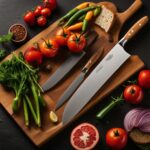 Essential Kitchen Knives for Every Beginner
Essential Kitchen Knives for Every Beginner
 How to Learn to Cook: A Beginner’s Step-by-Step Guide
How to Learn to Cook: A Beginner’s Step-by-Step Guide
 How to Tell if Oil is Hot Enough for Frying: A Guide
How to Tell if Oil is Hot Enough for Frying: A Guide
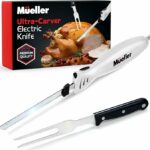 The 5 best knives for carving turkey in 2023
The 5 best knives for carving turkey in 2023
 Cast Iron Pizza
Cast Iron Pizza
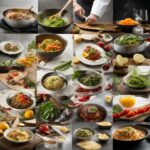 Mastering the Kitchen: What are the 5 Basic Cooking Skills?
Mastering the Kitchen: What are the 5 Basic Cooking Skills?
 Discover the Best Knife for Carving Turkey – A Must Have!
Discover the Best Knife for Carving Turkey – A Must Have!
 How to Reheat Casseroles: Best Methods Explored
How to Reheat Casseroles: Best Methods Explored




